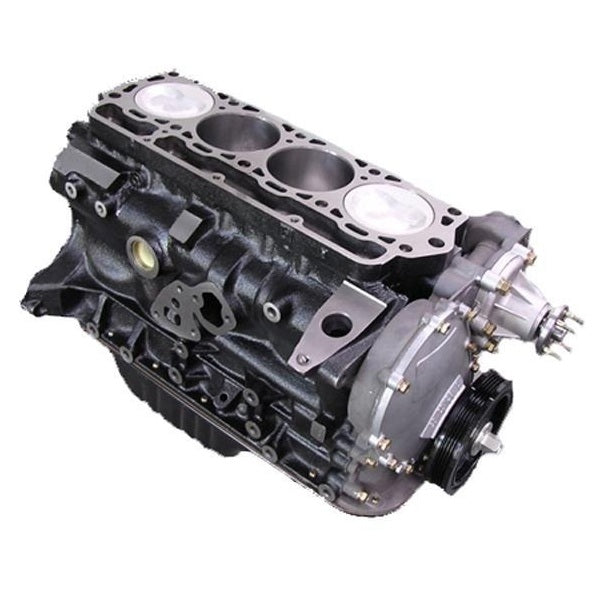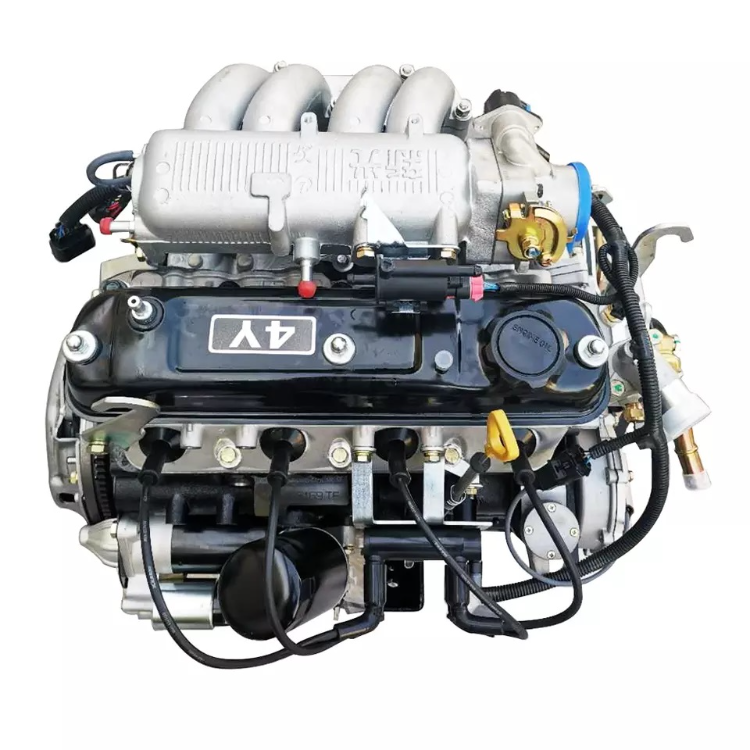The Role of the 4Y Engine in the Automotive Industry’s Evolution
The Role of the 4Y Engine in the Automotive Industry’s Evolution
Blog Article
Why the Engine Is the Ideal Option for Performance and Performance in Your Auto
The engine continues to be a crucial component in vehicle layout, largely due to its significant influence on both performance and effectiveness. As innovations in modern technology enable smaller engines to deliver amazing power while enhancing gas economic situation, the assimilation of features such as turbocharging and hybrid systems becomes increasingly important.
Understanding Engine Types
Understanding the different sorts of engines is vital for maximizing efficiency and effectiveness in vehicle style. The primary engine types include internal burning engines (ICE), electric engines, and crossbreed systems, each offering distinctive benefits and restrictions.
Interior combustion engines, which can be further categorized into fuel and diesel versions, count on the burning of fuel to generate power. Fuel engines typically give greater RPMs and much better acceleration, while diesel engines are known for their torque and gas performance, making them suitable for durable applications.
Electric engines, on the other hand, utilize electrical motors powered by batteries or fuel cells. They provide instantaneous torque distribution, causing smooth acceleration and lower exhausts. The performance of electric engines is considerably greater than that of ICEs, making them a popular selection for eco-conscious customers.
Hybrid systems combine both inner combustion and electrical engines, leveraging the toughness of both innovations. They optimize gas usage by using electrical power at lower rates and changing to gasoline or diesel for greater speeds or larger tons.
Selecting the ideal engine type is necessary for attaining preferred efficiency metrics and environmental sustainability in contemporary automotive design.
The Effect of Engine Size
Engine size regularly plays an essential role in identifying an automobile's efficiency and efficiency. Normally measured in litres or cubic centimeters, engine size straight influences the power output and torque attributes of a vehicle. Bigger engines usually produce even more horsepower, making it possible for greater acceleration and greater top rates. This is particularly useful in applications requiring robust efficiency, such as cars and sturdy vehicles.
However, increased engine size commonly correlates with reduced gas efficiency. Smaller sized engines can deliver ample efficiency for day-to-day driving while advertising far better efficiency, making them a preferred option in mid-size and portable lorries.
Additionally, innovations in engine design, such as turbocharging and straight fuel shot, allow smaller sized engines to achieve power levels equivalent to their larger equivalents. This trend stresses the importance of not only focusing on engine dimension yet additionally thinking about total lorry layout and innovation (4y engine). Eventually, the effect of engine dimension on performance and efficiency highlights the need for customers to examine their specific driving requirements and choices when selecting a car
Advanced Engine Technologies
Advancements in engine innovations have actually significantly improved the landscape of vehicle efficiency and effectiveness, building upon the fundamental concepts established by engine size. Notably, advancements such as turbocharging and straight gas injection have actually made it possible for smaller engines to supply power degrees previously connected with larger counterparts. Turbochargers press air getting in the engine, permitting for enhanced power outcome without an equivalent boost in engine size, while direct shot enhances fuel delivery, enhancing burning efficiency.
In addition, variable shutoff timing systems have actually become a vital innovation, permitting engines to readjust shutoff operation based upon driving problems. This adaptability enhances both performance during velocity and gas efficiency throughout cruising. Hybrid and electrical engine technologies additionally highlight the change in automotive design, integrating standard interior combustion engines with electrical motors to optimize efficiency while decreasing emissions.
Additionally, developments in materials scientific research have actually caused lighter, a lot more resilient engine parts, additionally improving efficiency and durability. The assimilation of innovative electronic devices and engine control devices additionally enables real-time changes, making sure optimum performance throughout various problems. Jointly, these sophisticated engine modern technologies not only enhance vehicle performance however likewise add to an extra lasting vehicle future, showing the recurring evolution of engine layout.
Balancing Power and Performance
Striking an equilibrium in between power and performance is critical in modern auto style as suppliers seek to fulfill progressively stringent exhausts policies while pleasing consumer need for efficiency (4y engine). The obstacle lies in maximizing engine features to supply robust power result without giving up fuel economic situation
To achieve this equilibrium, engineers use numerous methods, such as turbocharging, which enhances engine power by forcing in even more air, permitting a smaller sized engine displacement that improves gas efficiency. Variable shutoff timing technologies likewise play a considerable role, enabling engines to change their performance features based upon driving problems, consequently enhancing both power and effectiveness.
Additionally, improvements in products and making techniques have actually caused lighter engine elements, which lower general lorry weight and enhance gas efficiency without jeopardizing power. Crossbreed modern technologies have actually additionally become a feasible option, integrating traditional interior combustion engines with electric powertrains to provide an increase in performance while preserving reduced discharges.

Future Trends in Engine Style

In addition, the development of advanced products, such as light-weight composites and high-strength alloys, is readied to change engine components. These materials not only reduce weight however additionally boost thermal effectiveness, thereby maximizing efficiency. Furthermore, manufacturers are exploring variable compression ratios, allowing engines to adapt to different driving problems, enhancing both power outcome and fuel economic climate.
Even more, the surge of artificial knowledge and device understanding in engine style is making it possible for anticipating upkeep and real-time efficiency optimization. This technology can result in engines that self-adjust for maximum performance based on driving patterns.

Verdict
In final thought, the web link engine acts as a crucial element in attaining optimal efficiency and effectiveness in modern-day lorries. Advanced modern technologies, such as turbocharging and crossbreed systems, boost power output while reducing gas intake and exhausts. The interplay in between engine dimension and layout continues to evolve, driving advancements that balance exhilarating efficiency with ecological sustainability. As auto engineering proceeds, the concentrate on developing reliable, powerful engines will stay critical in shaping the future of transport.
Additionally, developments in engine style, such as turbocharging and direct fuel shot, enable smaller sized engines to attain power levels equivalent to their larger equivalents.Developments in engine innovations have actually significantly improved the landscape of vehicle performance and effectiveness, building upon the fundamental principles developed by engine size. Turbochargers compress air getting in the engine, allowing for enhanced power outcome without an equivalent rise in engine dimension, while direct injection optimizes fuel delivery, enhancing combustion effectiveness.
Crossbreed and electrical engine modern technologies additionally highlight the change in auto design, integrating conventional inner burning engines with electrical motors to make best use of effectiveness while decreasing emissions.
Collectively, these advanced engine technologies not just improve car efficiency but likewise contribute to a more sustainable automobile important link future, showing the continuous development of engine style. (4y engine)
Report this page